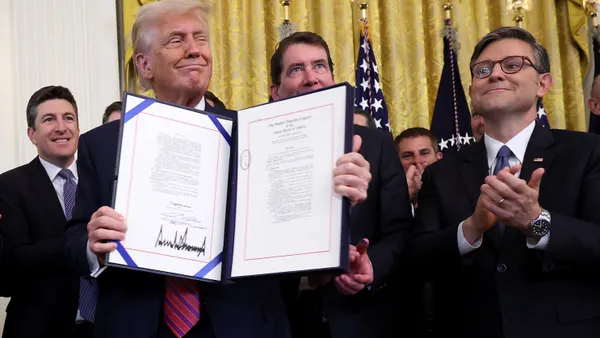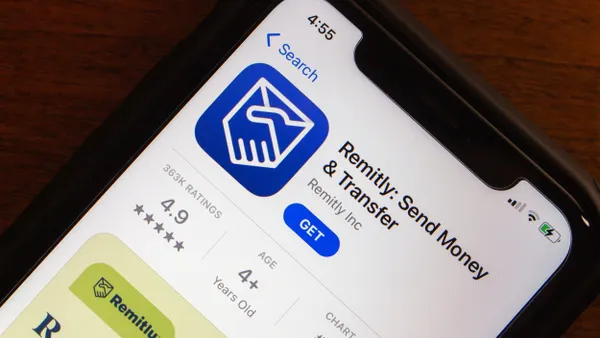Dive Brief:
- The Clearing House is raising the individual transaction limit for payments sent over its RTP network to $10 million, effective Feb. 9, 2025, according to a Wednesday press release.
- The bank-owned company said in the release that it expects the new threshold to encourage more real estate, supply chain and business-to-business transactions that generally are for larger amounts.
- "Raising the RTP transaction limit to $10 million will allow our corporate customers to send larger payments for a variety of needs, including payments outside of traditional business hours," Citizens Executive Vice President Matt Richardson said in the release.
Dive Insight:
The RTP network, which was launched seven years ago, handled some $500 billion in instant payments last month, and it now averages about one million payments on a daily basis, according to the press release.
The Clearing House has long tried to encourage businesses to adopt instant payments. In March 2021, the big banks that own the company issued a letter affirming their commitment to building up the real-time payments network in an effort to draw corporate use of the speedy system. At that time, it said it had invested $320 million into creating the network.
Currently, RTP transaction limit is $1 million. It was increased to that level from $100,000 in April 2022.
TCH’s investment appear to be paying off. Today, some 285,000 businesses per month send RTP payments via participating financial institutions, the release said. The company expects RTP to be useful for title insurance closings as well as faster settlements of large merchant transactions, per the announcement.
As TCH attempts to lure more commercial use to the RTP network, the Federal Reserve’s FedNow system is also seeking to expand. Both have amassed hundreds of banks and credit unions on their instant payment systems, though FedNow edged ahead this year, given a larger number of smaller institutions.
To further entice financial firms, FedNow may consider cutting fees to access the real-time payment system, per a Wolfe Research report released in August. For next year though, the Fed is holding its fee levels steady, according a price forecast issued last month.
Amid its pursuit of more banks and credit unions, the RTP network has grown its payment volume and values. In October, it processed 31.7 million transactions valued at $25.4 billion, an increase of 6.2% and 9% year-over-year, respectively, according to a Nov. 12 press release. The organization noted that 42% of its transactions occur overnight, on weekends and during holidays.
As the Federal Reserve and The Clearing House tweak their respective real-time payment networks, finance industry insiders have spoken out about what it would take to scale instant payments. During a Payments Dive panel earlier this year, executives from JPMorgan Chase, Walmart and other major companies discussed the need for instant payment standards in order to make the service widely available.
As the U.S. tries to enhance its instant payment capabilities, it lags behind more advanced payment systems abroad. As of May, the U.S.’ instant payment adoption rate ranked 11th compared to other nations globally, according to payments company ACI Worldwide. Other countries ranking higher included India, Brazil, Thailand, China and South Korea, according to an ACI report.













